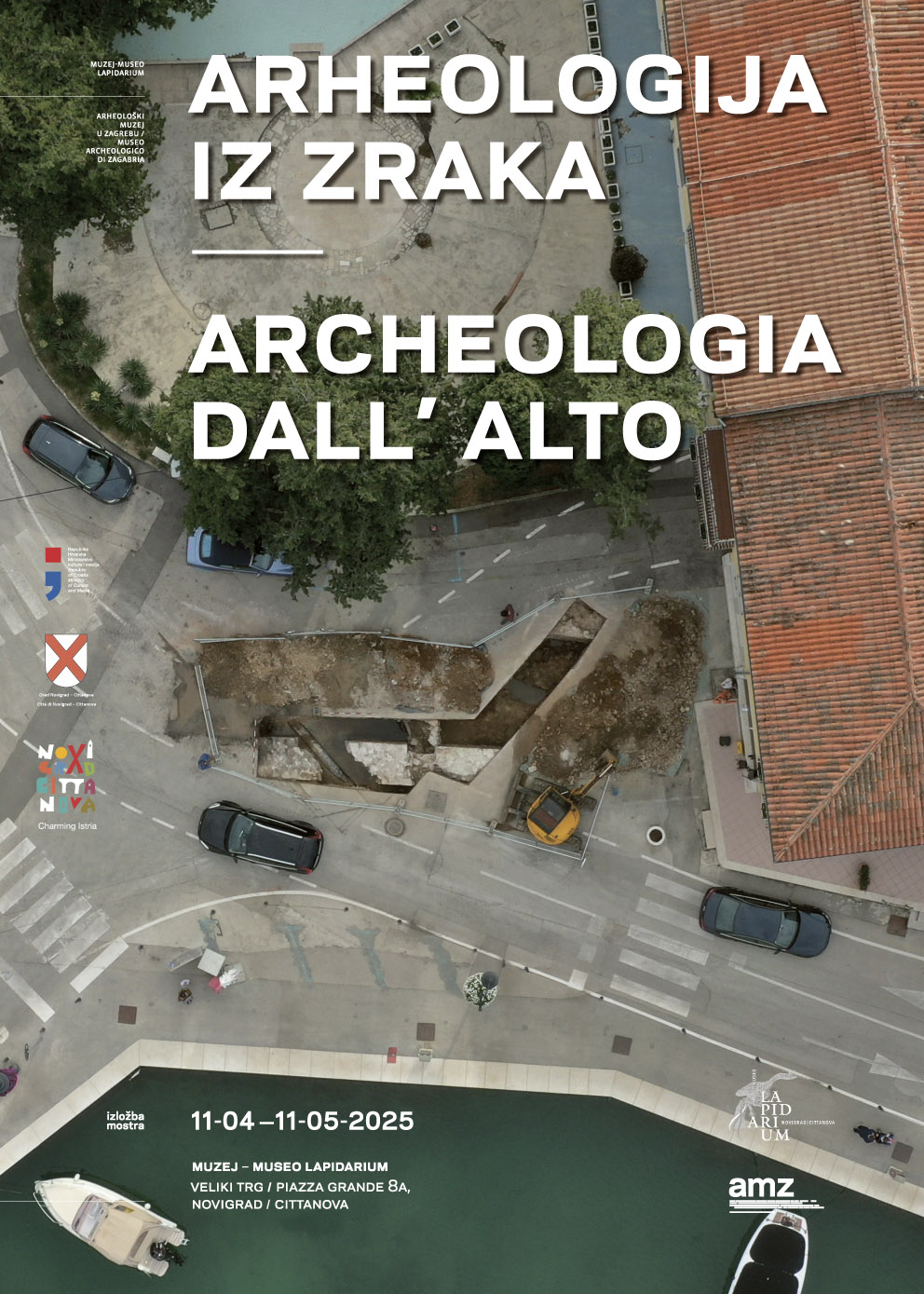11/4 – 11/5
Exhibition opening: 11th April at 6 p.m.

Archaeology and Aerial Photography share a common history that goes back to the beginning of the 20th century when the first aerial photographs of Stonehenge and the forum in Rome were taken from a balloon. In time, a separate branch of our scientific field developed – aerial archaeology that focuses on studying the traces of past human activities in the landscape. Photographs taken from the air were also used to document and present archaeological sites. Until recently, these were taken from balloons, ladders, service vehicles and other platforms. However, with the development of new technologies and the commercialization of unmanned aerial vehicles, the process of documenting sites has been significantly accelerated, and the quality of presentational photographs obtained a new dimension.
Unmanned aerial vehicles or, colloquially, drones, have a long history and a wide spectrum of use, but they have only been developing quickly and commercially in the last ten years or so. Rotorcrafts hold a special place in the wide spectrum of different aerial vehicles because they are able to hover in place. The most popular variant is certainly the quadcopter. At first, the vehicles required additional equipment, meaning that the camera was separate from the drone, while today drones come with integrated cameras in RTF (ready to fly version.
Drones have allowed us to record sites from previously unobtainable angles and positions, and the mere fact that they are a relatively cheap product has helped them become an integral part of toolset used by larger institutions that do archaeological research, thereby significantly increasing the number of aerial photographs of archaeological sites.
The goal of the Archaeology from the air exhibition is to present some of the most interesting and attractive aerial photographs of archaeological sites from the territory of the Republic of Croatia. Tis exhibition of photographs stands apart from classic archaeological exhibitions. The main focus in on the photographs themselves, and information about the archaeological context has been reduced to a minimum.
Authors of photographs and heads of excavations: Ivan Alduk, Ana Azinović-Bebek, Jacqueline Balen, Martin Bažoka, Giulia Boetto, Igor Borzić, Sébastien Bully, Josip Burmaz, Vedran Cerovski, Morana Čaušević Bully, Eva Buća, Lea Čataj, Martina Čelhar, Robert Čimin, Maja Čuka, Löic Damelet, Marko Dizdar, Krešimir Grbavac, Zoran Grbin, Maja Grgurić, Andrej Janeš, Tomislav Jerončić, Hrvoje Kalafatić, Vedran Katavić, Ida Koncani Uhač, Domagoj Kristović, Saša Kovačević, Antonio Kovačević, Marin Kraljev, Andreja Kudelić, Dora Kušan Špalj, Tea Lokner, Dženi Los, Marin Mađerić, Hrvoje Manenica, Igor Miholjek, Ina Miloglav, Enzo Morović, Zlatan Novak, Dorica Nemeth-Ehrlich, Mate Parica, Silvana Petešić, Domagoj Perkić, Tajana Pleše, Hrvoje Potrebica, Dinko Radić, Irena Radić Rossi, Dragana Rajković, Marta Rakvin, Antonio Ribić, Borko Rožanković, Petar Sekulić, Goran Skelac, Bartul Šiljeg, Krešimir Šobat, Rajna Šošić-Klindžić, Jure Šućur, Ivan Šuta, Dinko Tresić Pavičić, Ante Uglešić, Marko Uhač, Željko Ujčić, Krešimir Vacek, Josip Višnjić, Dalibor Vugrinec, Miroslav Vuković, Mario Zaccaria, Igor Zirojević.
Exhibition authors: Jacqueline Balen, Miroslav Vuković
Exhibition organizers: Lapidarium Museum and Archaeological Museum in Zagreb
The exhibition is funded by the Ministry of Culture and Media of the Republic of Croatia, the City of Novigrad-Cittanova, and the Novigrad-Cittanova Tourist Board.
